
We had three students and nine others at Rancho Marino Reserve for our optional Spring Break trip, but
this was Friday afternoon's low tide when Prof. Ee and Mauricio (former Bio 317 student) were alone visiting the Reserve's intertidal.
| 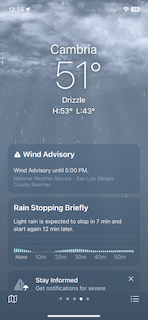
Conditions were unusually cool, windy, and wet for this time of year but the Reserve was beautiful, as usual.
| 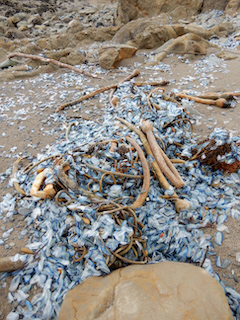
Velella velella (by-the-wind sailors) everywhere in the drift.
|
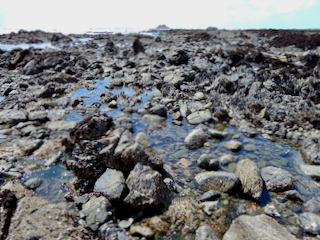
-
| 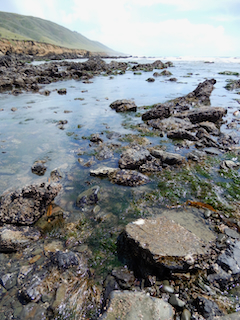
-
| 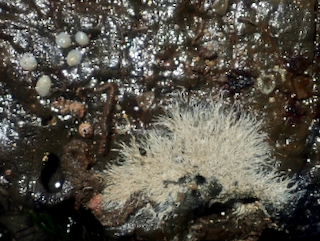
Salmacina tribranchiata, a tiny clonal serpulid polychaete (also known as the shredded wheat worm)
with some Crepidula sp. on the upper left.
|
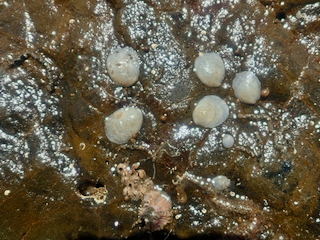
Crepidula sp. (Calyptraeidae), a suspension-feeding snail.
| 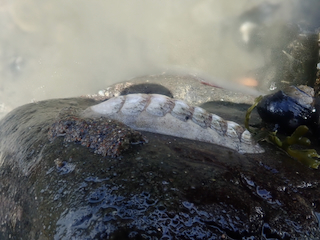
Stenoplax heathiana (Heath's chiton)
| 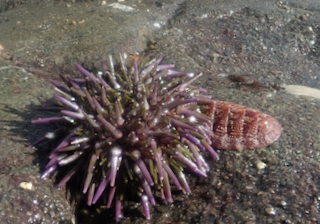
A juvenile purple urchin (Strongylocentrotus purpuratus) is next to a Mertens' chiton
(Lepidozona mertensii).
|
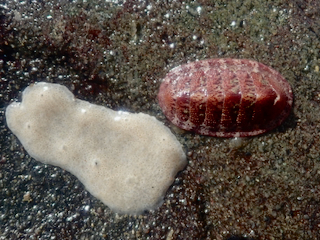
Lepidozona mertensii (Mertens' chiton) next to a colonial tunicate,
tentative identification either Didemnum carnulentum or Trididemnum opacum.
| 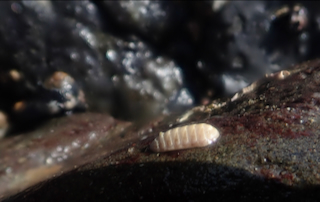
Leptochiton rugatus (red-footed chiton)
| 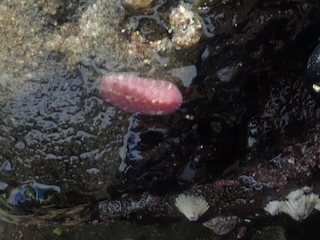
juvenile Stenoplax fallax
|
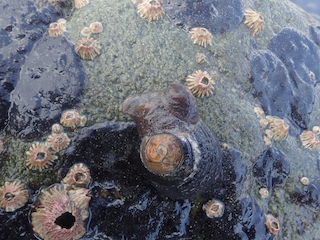
a pair of Crepidula adunca (hooked slipper snails) attached to a
Tegula funebralis (black teguline snail)
| 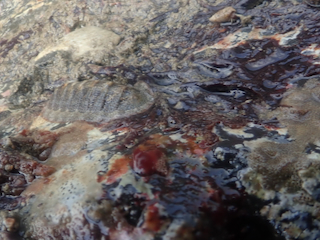
-
| 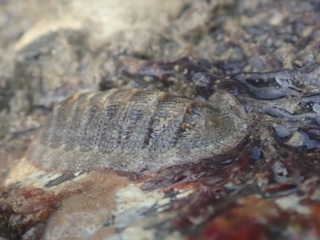
Lepidozona cooperi (Cooper's chiton)
|
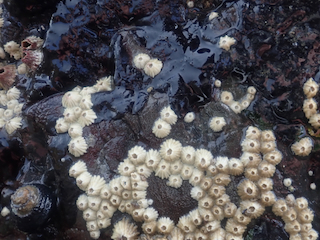
-
| 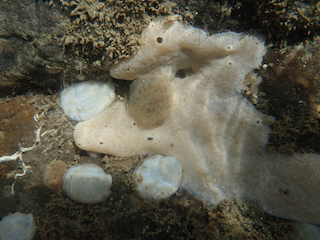
-
| 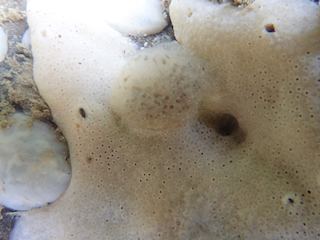
A colonial tunicate, Trididemnum opacum, with a gastropod, Marsenina stearnsii (Caenogastropoda: Velutinidae),
feeding on it. Look for the blob in the middle, not the Crepidula sp. on the left, which suspension-feeds on plankton using currents generated by the cilia on its gill.
For more information on this odd neither slug nor snail caenogastropod (normal sea slugs are heterobranchs), see Fassio et al. (2023).
- Source: Fassio et al. 2023
|
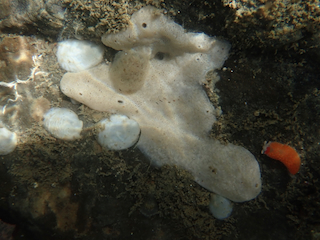
-
| 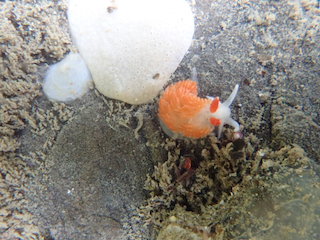
Aeolidiella oliviae (Olive's aeolid) is a nudibranch that feeds on anemones. It just happens to be crawling
over a colonial tunicate in this series.
| 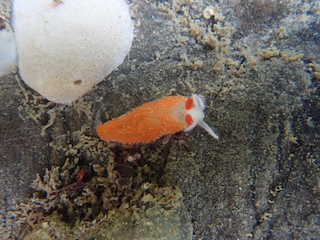
-
|
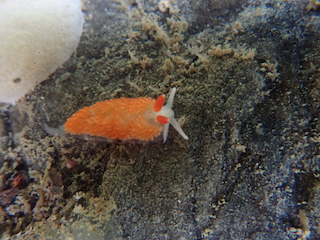
-
| 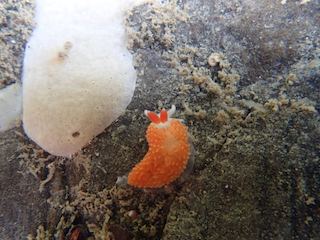
-
| 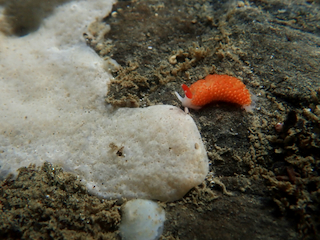
-
|
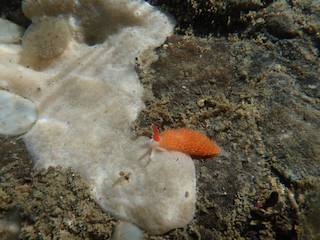
-
| 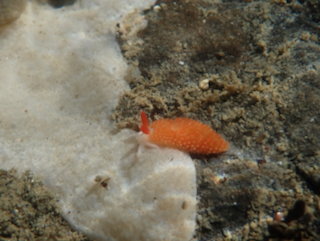
-
| 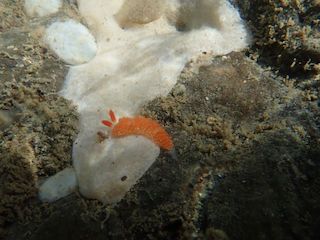
-
|
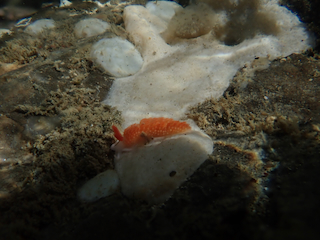
-
| 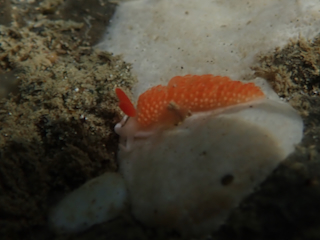
-
| 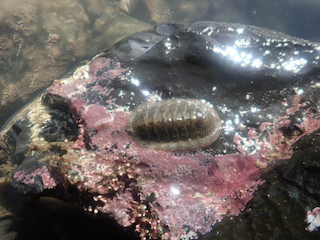
A cryptic Stenoplax sp. (left) and a larger Lepidozona (right). The latter would be
readily identified as L. cooperi if this was iNaturalist.org, but I suspect that it is more likely the green morph of L. mertensii, with a more orange tinge
than is found in L. cooperi in my experience. L. mertensii is more often
burgandy (see other images here) or bright orange. The girdle scales are different, ribbed in L. cooperi and smooth and occasionally mammilate (nipple-like)
in L. mertensii, as illustrated with SEM by Ferreira (1978). - Source: Ferreira 1978
|
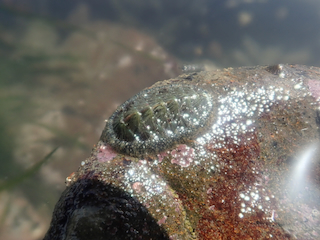
Mopalia lignosa (woody chiton)
| 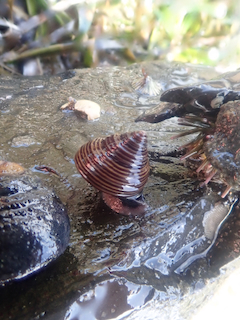
-
| 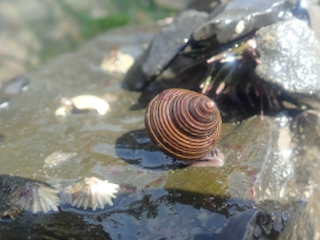
Calliostoma ligatum (blue topsnail)
|
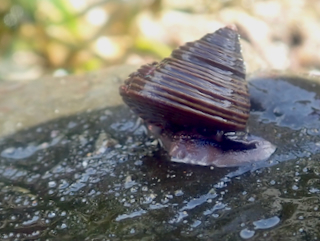
-
| 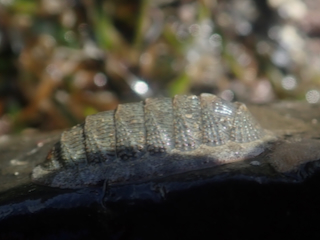
Lepidozona cooperi (Cooper's chiton)
| 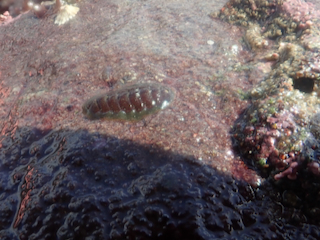
Cyanoplax dentiens (Gould's baby chiton)
|
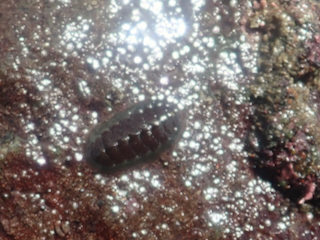
-
| 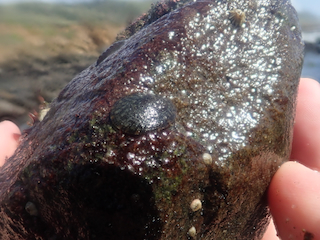
-
| 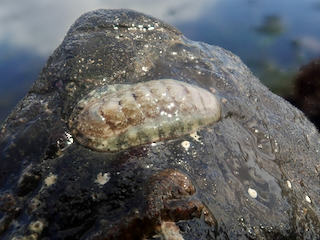
Stenoplax heathiana (Heath's chiton)
|
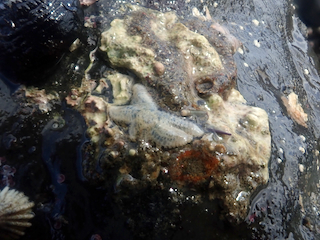
-
| 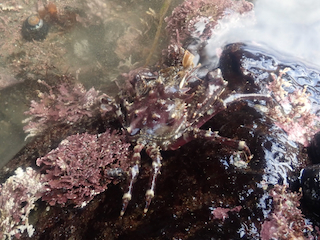
Pugettia richii (cryptic kelp crab) - identification kindly confirmed by Dr. Greg Jensen
| 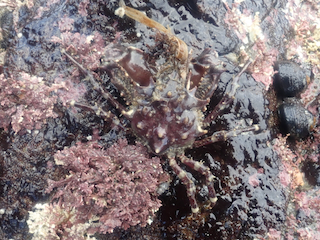
-
|
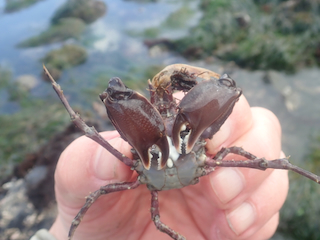
-
| 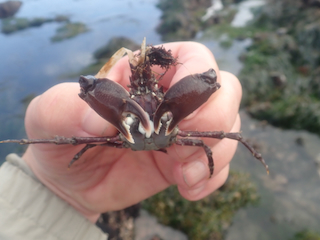
-
| 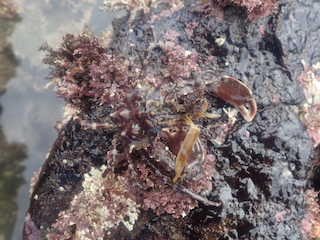
-
|
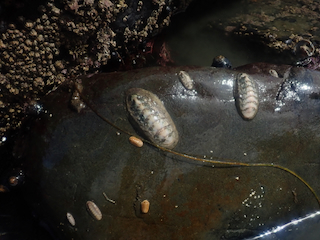
-
| 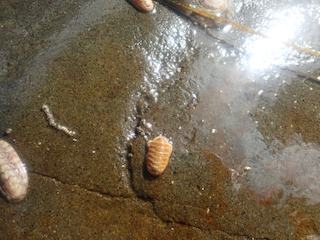
-
| 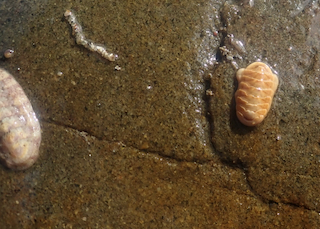
-
|
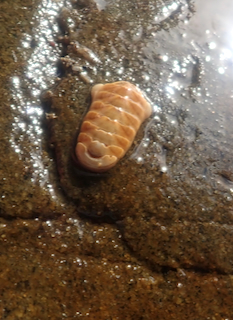
-
| 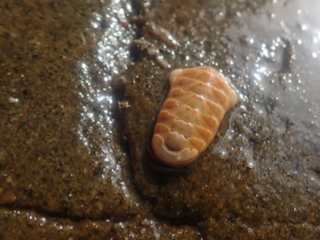
Leptochiton rugatus (red-footed chiton)
| 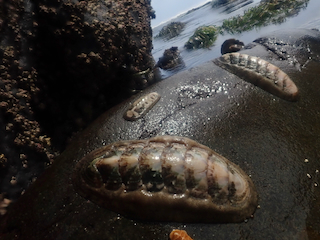
Stenoplax heathiana (Heath's chiton)
|
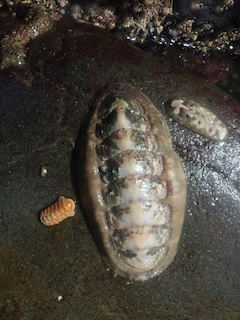
two Stenoplax heathiana (Heath's chitons) with a smaller
Leptochiton rugatus (red-footed chiton) on left
| 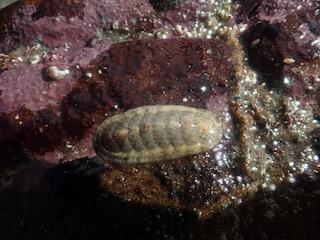
-
| 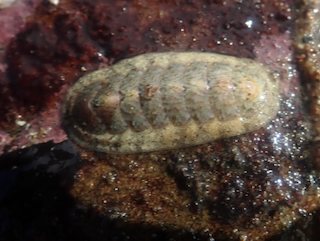
Stenoplax heathiana small adult
|
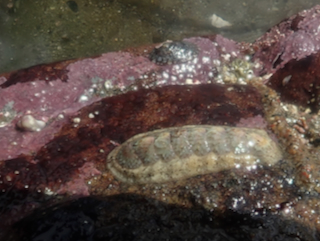
-
| 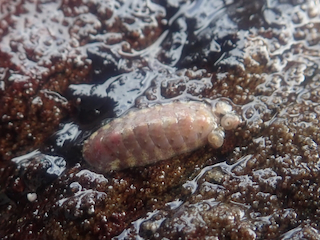
This juvenile Stenoplax (either S. heathiana or S. fallax) is less than 1 cm length,
whereas adults can exceed 8 cm. This juvenile already has three Vitrinella oldroydi posterior attendants.
An adult Heath's chiton can have perhaps 100 snails typically clustered near the derriere. Here is what we said in 2021, from Goto et al. (2021):
...Vitrinella oldroydi, which lives within the mantle cavity or on the dorsal girdle or substrate near the posterior end of at least two species of large chitons,
Stenoplax conspicua (Dall, 1879) or S. heathiana Berry, 1946 (see Light, 1957; Eernisse et al., 2007); we propose, from the apparent
attraction of V. oldroydi to the vicinity of the chiton's anus (D.J.E., personal observation), they are likely feeding on the chiton's fecal pellets,
but further confirmation is needed. - Source Goto et al. 2021
| 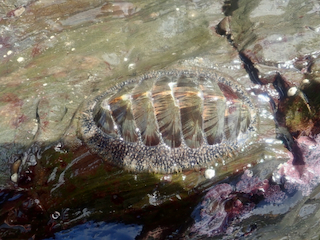
Mopalia lignosa (woody chiton)
|
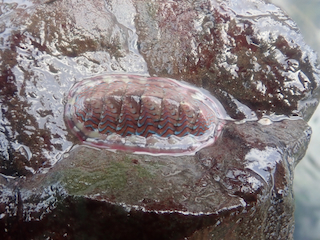
Tonicella lokii (Loki's lined chiton)
| 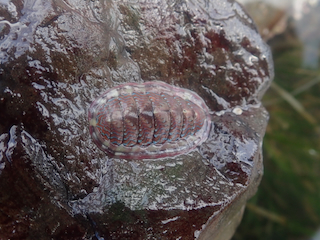
-
| 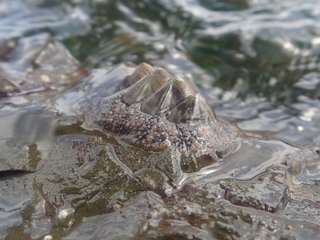
-
|
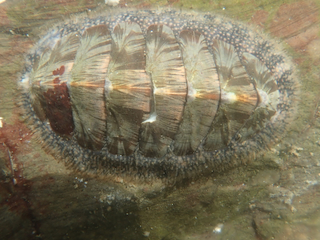
Mopalia lignosa (woody chiton)
| 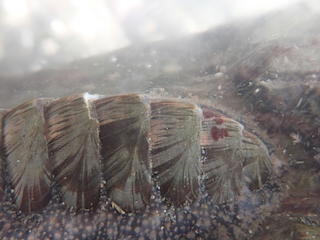
-
| 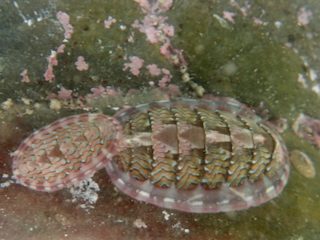
Tonicella lokii (Loki's lined chiton)
|
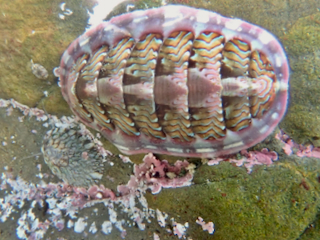
-
| 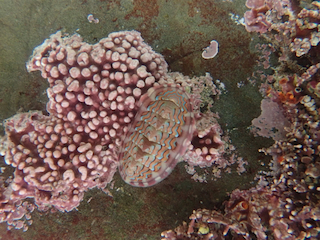
Tonicella lokii (Loki's lined chiton)
| 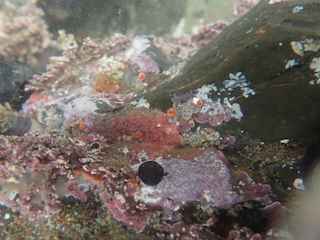
-
|
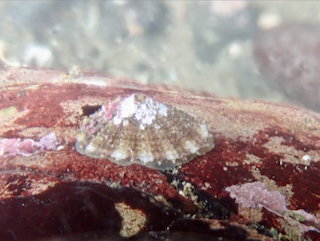
Diodora aspera (rough keyhole limpet)
| 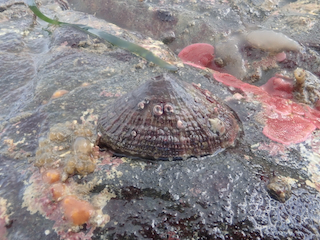
Diodora aspera (rough keyhole limpet)
| 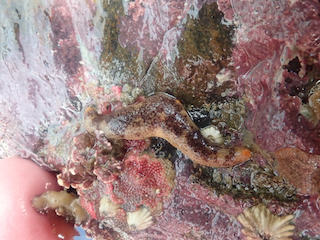
-
|
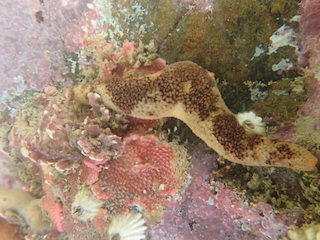
barely regenerating Henricia pumila (dwarf brooding Henricia)
| 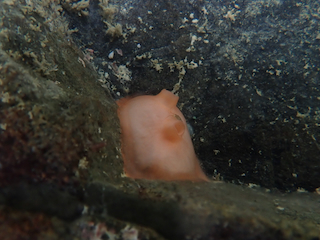
A solitary tunicate, Cnemidocarpa finmarkiensis, which Abbott and Newberry (in Morris et al. 1980 -
Intertidal Invertebrates of California) listed as common further north
but sparingly south to southern Monterey Co., CA. Cambria is further south than the southernmost reported record in this account, in San Luis Obispo Co., so it could be a
new southernmost record.
| 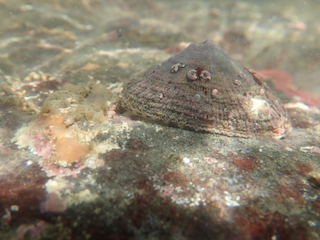
Diodora aspera (rough keyhole limpet)
|
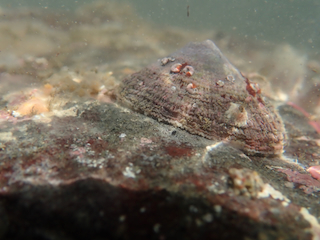
-
| 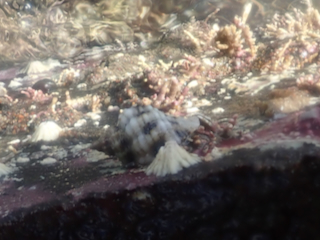
juvenile Paciocinebrina circumtexta (circled rock snail)
| 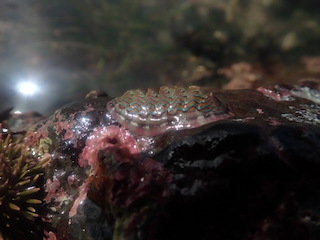
Tonicella lokii (Loki's lined chiton)
|
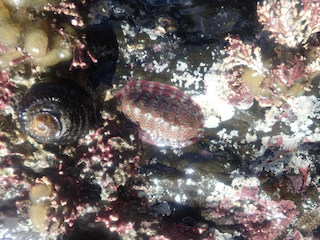
Tonicella lokii (Loki's lined chiton)
| 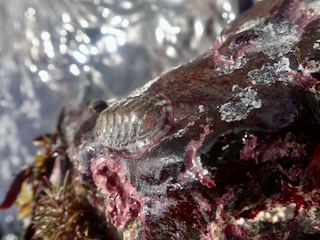
-
| 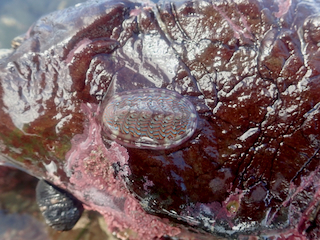
-
|
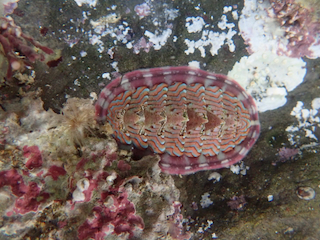
-
| 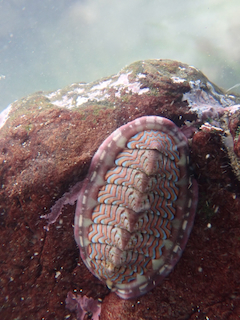
-
| 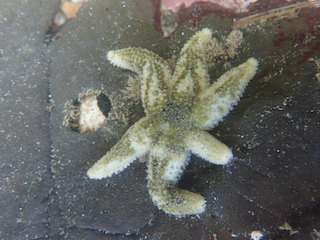
Leptasterias sp.
|
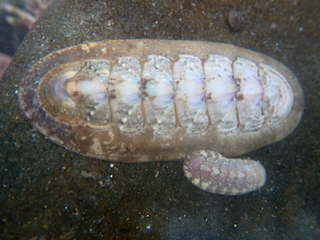
Stenoplax heathiana adult and juvenile
| 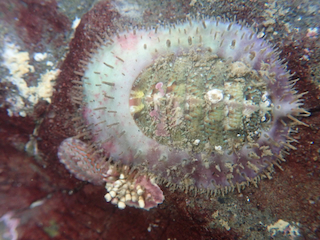
Placiphorella velata (veiled chiton) is a carnivorous chiton, like a Venus flytrap waiting for a crustacean
to swim under its anterior expanded mantle flap, which can be slam down on its prey surprisingly fast.
| 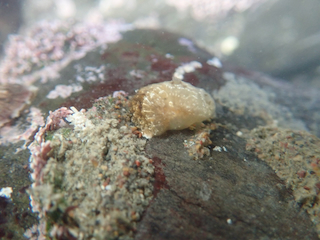
-
|
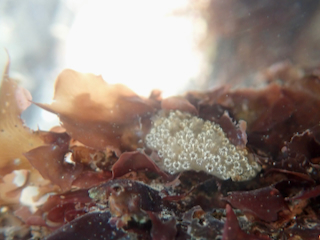
-
| 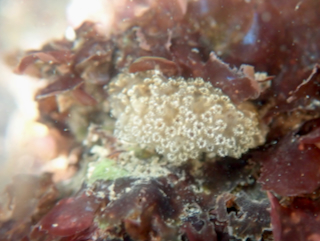
colonial tunicate
| 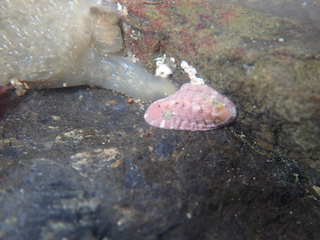
Stenoplax fallax
|
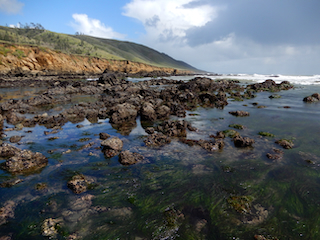
-
| 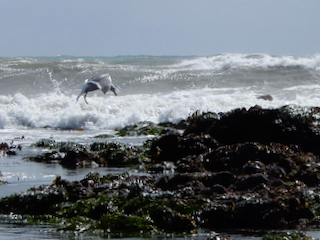
-
| 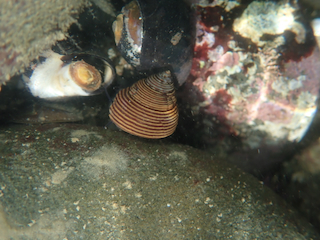
Calliostoma ligatum (blue topsnail)
|
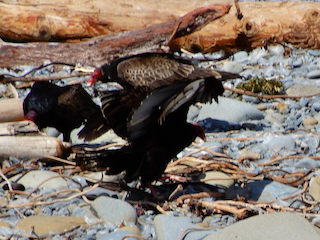
-
| 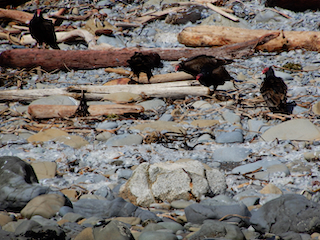
turkey vultures
| 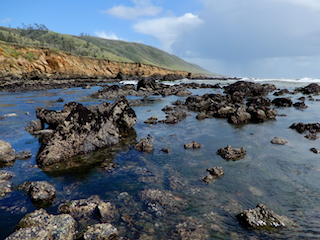
-
|
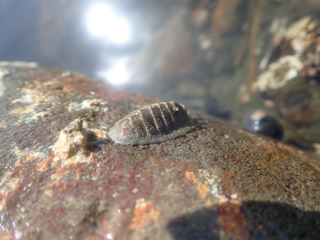
-
| 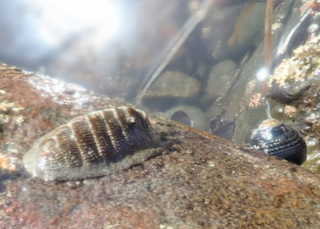
-
| 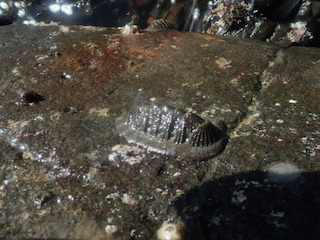
-
|
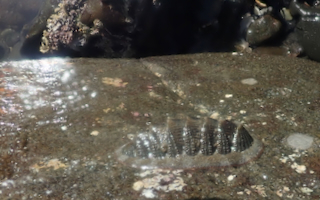
Lepidozona cooperi (Cooper's chiton)
| 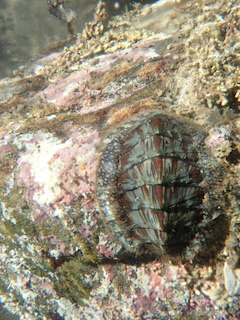
Mopalia lignosa (woody chiton)
| 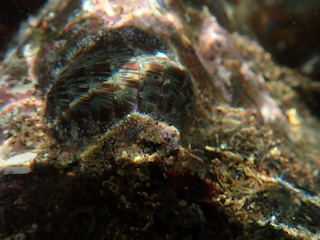
-
|
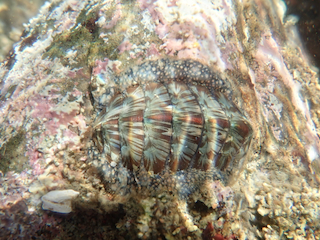
-
| 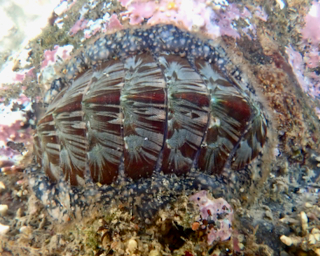
-
| 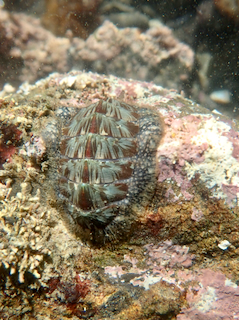
-
|
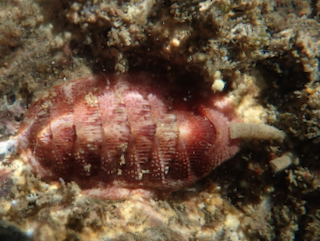
Lepidozona mertensii (Mertens' chiton)
| 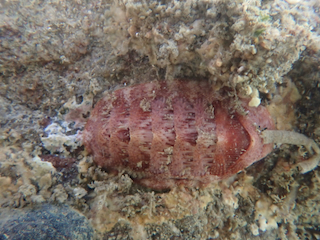
-
| 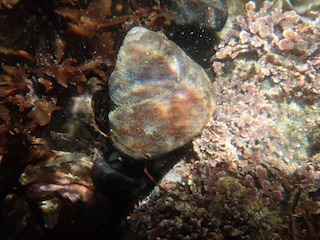
-
|
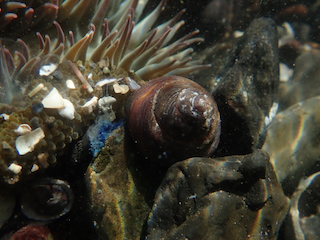
hermit crab in teguline shell by a sunburst anemone (Anthopleura sola)
| 
-
| 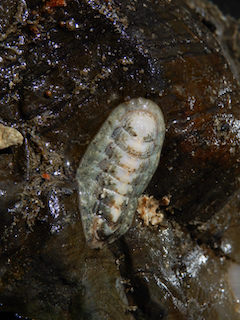
Stenoplax heathiana
|
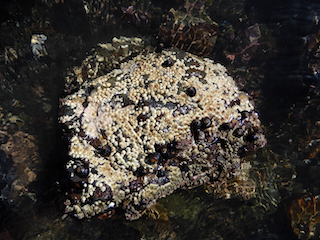
-
| 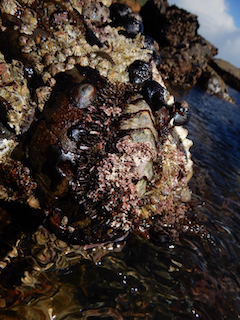
-
| 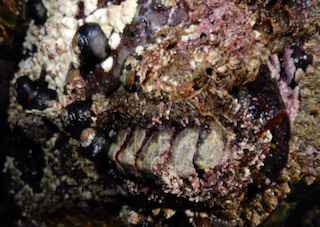
Mopalia muscosa with a much smaller (on middle right) Cyanoplax dentiens
|
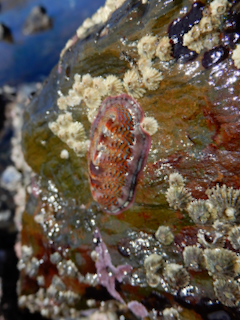
Tonicella lokii (Loki's lined chiton)
| 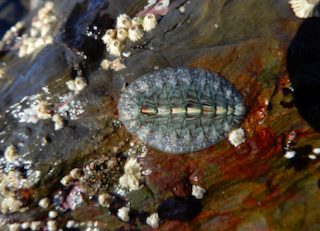
Mopalia lignosa (woody chiton)
| 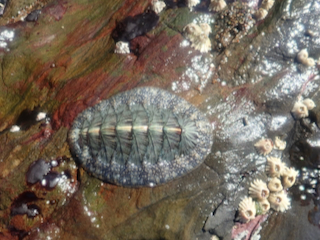
-
|
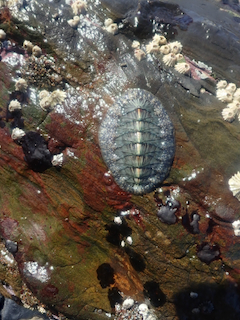
-
| 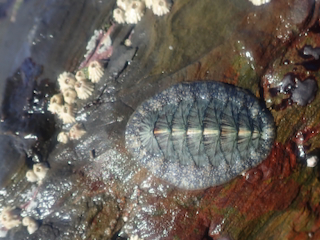
-
| 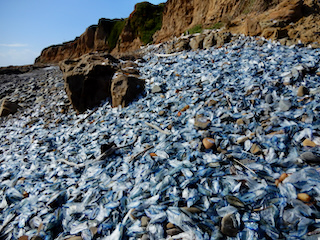
Velella velella (by-the-wind sailors) in the drift
|
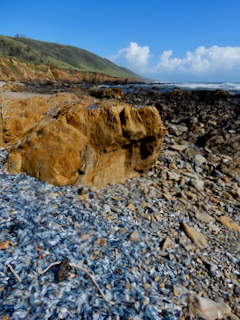
-
| 
-
| 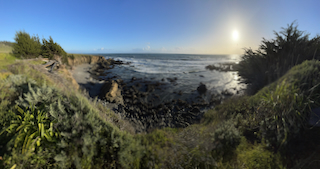
-
|
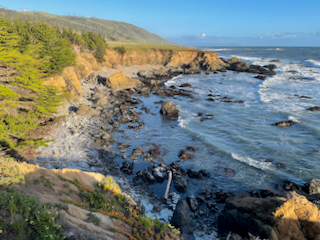
-
| 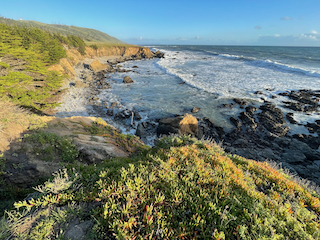
-
| 
-
|
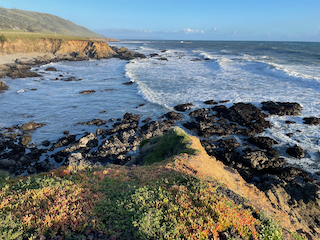
-
| 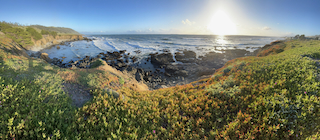
-
| 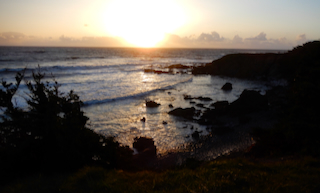
-
|
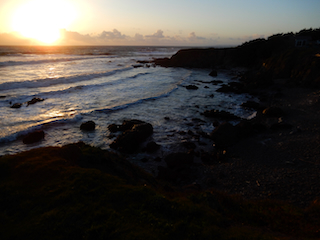
-
| 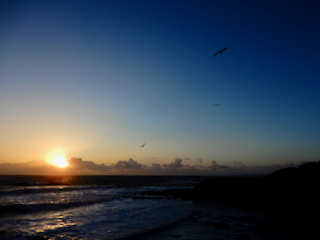
-
| 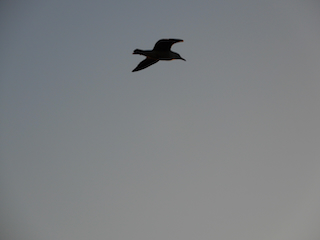
-
|
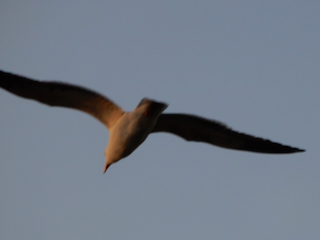
-
| 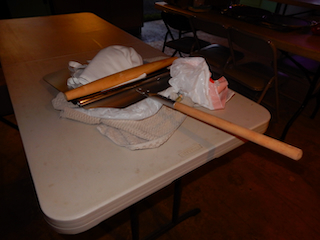
-
| 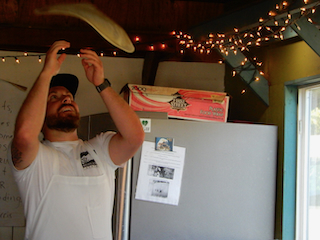
-
|
 Under Construction!
Under Construction! Under Construction!
Under Construction!